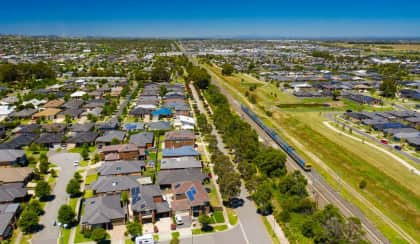Melbourne’s public transport falls behind housing
Could Melbourne’s public transport paralysis sabotage housing plans?

Since 2004, apartment numbers in Melbourne have nearly doubled, but public transport services have lifted just 5 per cent.
It’s an issue that has come to the attention of RMIT’s Centre for Urban Research.
Over the past few decades, urban policy has undergone a radical shift from the car-centric sprawl of the 1950s and ’60s to a design paradigm oriented around public transit.
But a new study from RMIT has revealed that public transport services in Melbourne are letting residents down.
The number of apartments in the Victorian capital, since 2004, has increased by 88 per cent. However, the number of public transport services located within walking distance of apartments has increased by just 5 per cent.
Project lead and RMIT senior research fellow, Dr Chris De Gruyter, warned that the mismatch between housing supply and transport services is undermining the fundamental goals of densification.
“We’re seeing all these new apartments being built along public transport routes but we’re not seeing services step up to match those new apartment developments,” said De Gruyter.
“More needs to be done to better integrate transport and housing policies to improve the sustainability, productivity and liveability of our city.”
Public transport provision was divided unequally and haphazardly between Melbourne suburbs. Neither socioeconomic factors nor resident demand appeared to influence service provision, indicating there was little rhyme or reason to the distribution of transport services across the city.
For instance, apartment housing along the 86 tram route had risen by 102 per cent since 2004, but tram services had increased just 0.3 per cent. In contrast, the City of Frankston saw 16 per cent growth in apartment housing but a substantial 58 per cent increase in train services.
“As far as we can see, there’s no pattern to why some areas have more frequent services than others,” said lead researcher Steve Pemberton.
“But what we can say is public transport services are not consistently matching the growth of apartment housing.”
Over the 19-year period studied, public transport vehicles across Melbourne experienced a 35 per cent capacity increase. According to the researchers, however, larger vehicles are not a solution.
“From the perspective of passengers, they are still waiting long times between services. They’re just crammed into a bigger vehicle with more people,” Pemberton said.
“If the objective is to encourage people to live in higher density housing, then an uplift of public transport services in areas where density is increasing should be part of what helps make people want to live there,” he concluded.

